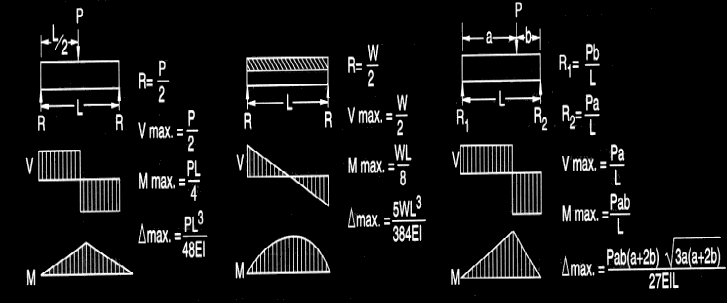Term
| Definition
Extra Improved Plow Steel
Independent Wire Rope Core
Right Regular Lay |
|
Term
| Definition
| Galvanized Aircraft Cable |
|
Term
| Definition
|
Term
| Definition
|
Term
| Breaking strength of 3/8' 7x19 GAC |
| Definition
|
Term
| Breaking Strength of 1/2' 7x19 GAC |
| Definition
|
Term
| Breaking Strength of 1/4' 6x19 IWRC XIPS |
| Definition
|
Term
| Definition
|
Term
| Definition
|
Term
| Definition
|
Term
| Definition
|
Term
| Definition
|
Term
| 1 Meter equals how many Feet? |
| Definition
|
Term
| 1 Centimeter equals how many Inches? |
| Definition
|
Term
| 1 Millimeter equals how many Inches? |
| Definition
|
Term
| 1 KiloNewton equals how many Pounds? |
| Definition
|
Term
| 1 Kilogram equals how many Pounds? |
| Definition
|
Term
| You always by the 'magic number' when you convert Metric to Imperial. |
| Definition
|
Term
| You always by the 'magic number' when you convert Imperial to Metric. |
| Definition
|
Term
| When calculating Resultant Force on a pulley, if the cable angle is 0 degrees, what is the Multiplying Factor on the Load? |
| Definition
|
Term
| When calculating Resultant Force on a pulley, if the cable angle is 45 degrees, what is the Multiplying Factor on the Load? |
| Definition
|
Term
| When calculating Resultant Force on a pulley, if the cable angle is 90 degrees, what is the Multiplying Factor on the Load? |
| Definition
|
Term
| When calculating Resultant Force on a pulley, if the cable angle is 120 degrees, what is the Multiplying Factor on the Load? |
| Definition
|
Term
| When calculating Resultant Force on a pulley, if the cable angle is 150 degrees, what is the Multiplying Factor on the Load? |
| Definition
|
Term
| When calculating Resultant Force on a pulley, if the cable angle is 180 degrees, what is the Multiplying Factor on the Load? |
| Definition
|
Term
| In a rope and pulley system there can be no mechanical advantage without at least one pulley in the system. |
| Definition
|
Term
| The rule of thumb for quickly determining mechanical advantage in a rope and pulley system is to count the number of parts of the that are applying force on the running block. |
| Definition
|
Term
| What is the maximum recommended fleet angle of a cable running between sheaves? |
| Definition
|
Term
| A good rule of thumb for limitting the fleet angle of a cable between two sheaves is that you are allowed 1 unit of offset for every units of distance between the sheaves. |
| Definition
|
Term
| When calculating the Maximum Allowable Offset between two sheaves, you must multiply the Distance between the two sheaves by what constant value? |
| Definition
|
Term
| Describe the equation for calculating fleet angle when the Distance and Offset between two sheaves is known. |
| Definition
| Angle = Arctangent x (Offset/Distance) |
|
Term
| What is the minimum recommended D:d ratio for sheaves used with 7x19 and 6x19 construction wire ropes? |
| Definition
|
Term
| What is the formula for calculating the included angle of a two point bridle? |
| Definition
| Angle = Arctan H1/V1 + Arctan H2/V2 |
|
Term
ETCP Formula: Resultant Force on a Pulley |
| Definition
|
Term
ETCP Formula: Horizontal Force on Anchor 1 in a 2-Point Bridle |
| Definition
|
Term
ETCP Formula: Horizontal Breast Line Force |
| Definition
|
Term
ETCP Formula: Vertical Force on Anchor1 in a 2 Point Bridle |
| Definition
|
Term
ETCP Formula: Tension in Leg 1 of a 2 Point Bridle |
| Definition
|
Term
ETCP Formula: Length of Leg 1 in a 3 Point Bridle |
| Definition
|
Term
ETCP Formula: Distribution of a Single CPL on a Beam |
| Definition
|
Term
ETCP Formula: Distribution of Multiple CPLs on a Beam |
| Definition
|
Term
ETCP Formula: Distribution of Multiple and
Cantilevered CPLs on a Beam |
| Definition
|
Term
Formulas for Center of Gravity of a Beam |
| Definition
Side 1 = (L2 x Span) / (L1 + L2) Side 2 = (L1 x Span) / (L1 + L2) |
|
Term
What is the Formula for Working Load Limit? |
| Definition
WLL = Breaking Strength / Design Factor |
|
Term
| Definition
|
Term
Weight of Water: By Area By Volume |
| Definition
A: 5.202 lb/ft2 per inch deep V: 62.428 lb/ft3 |
|



